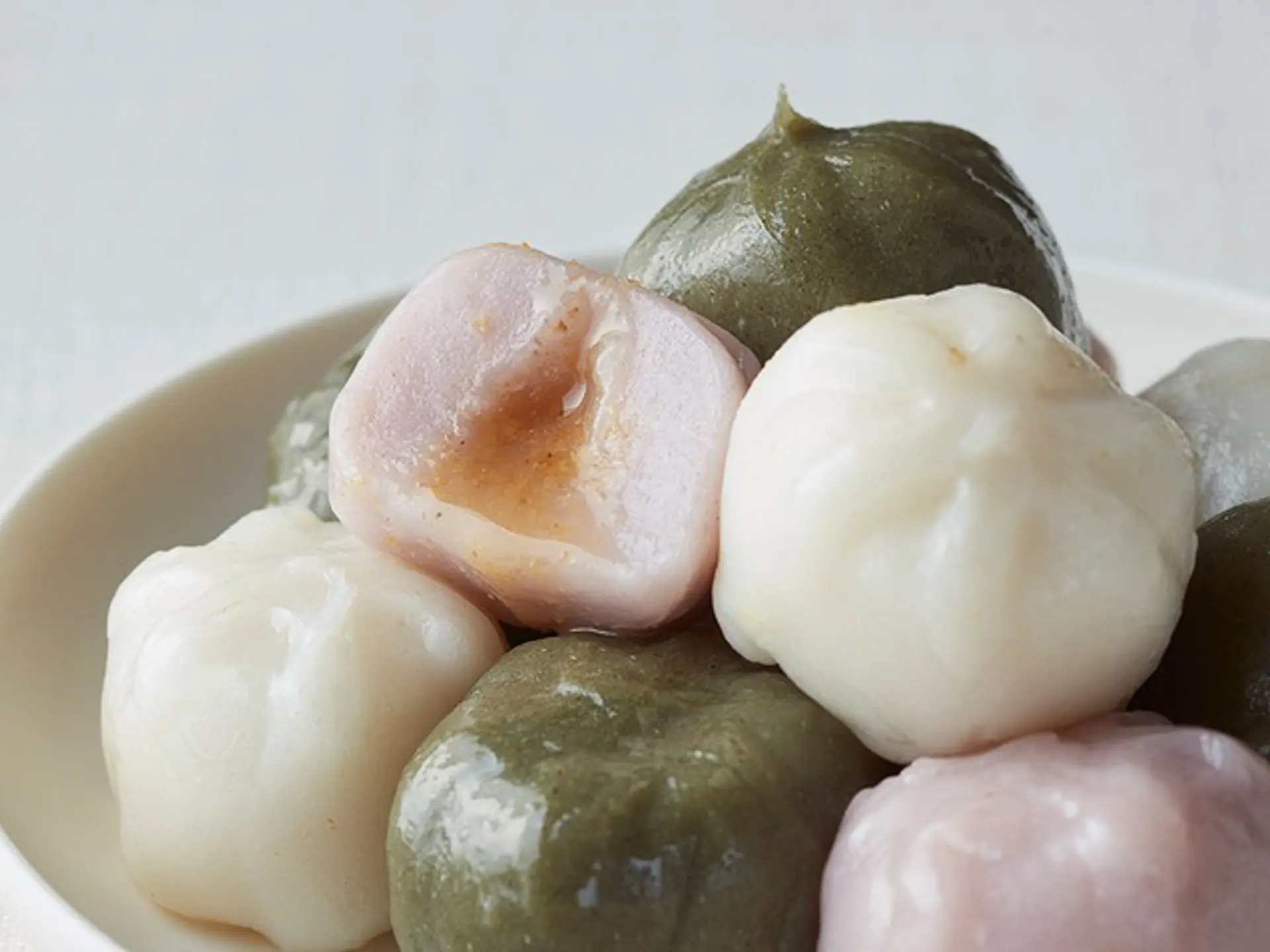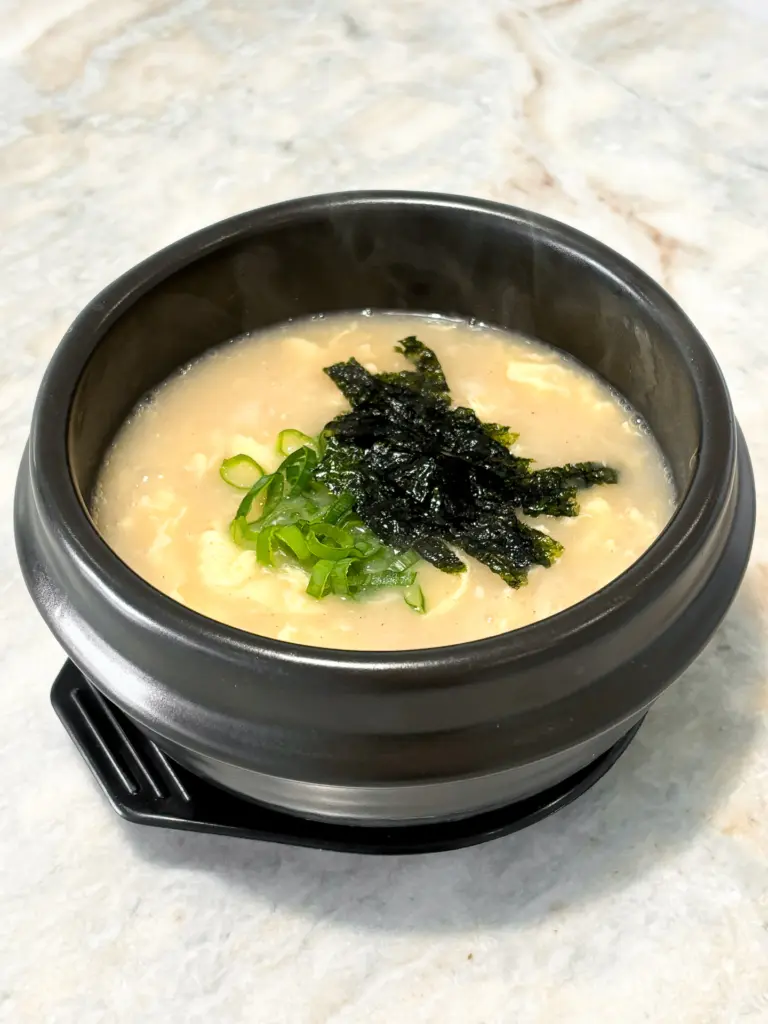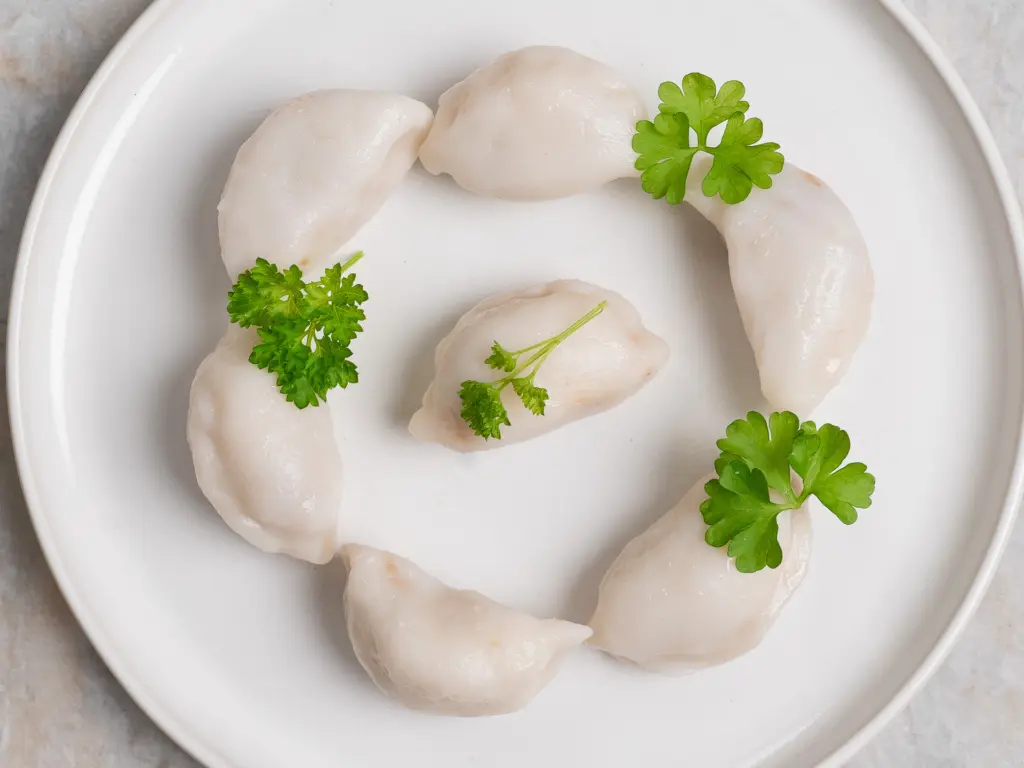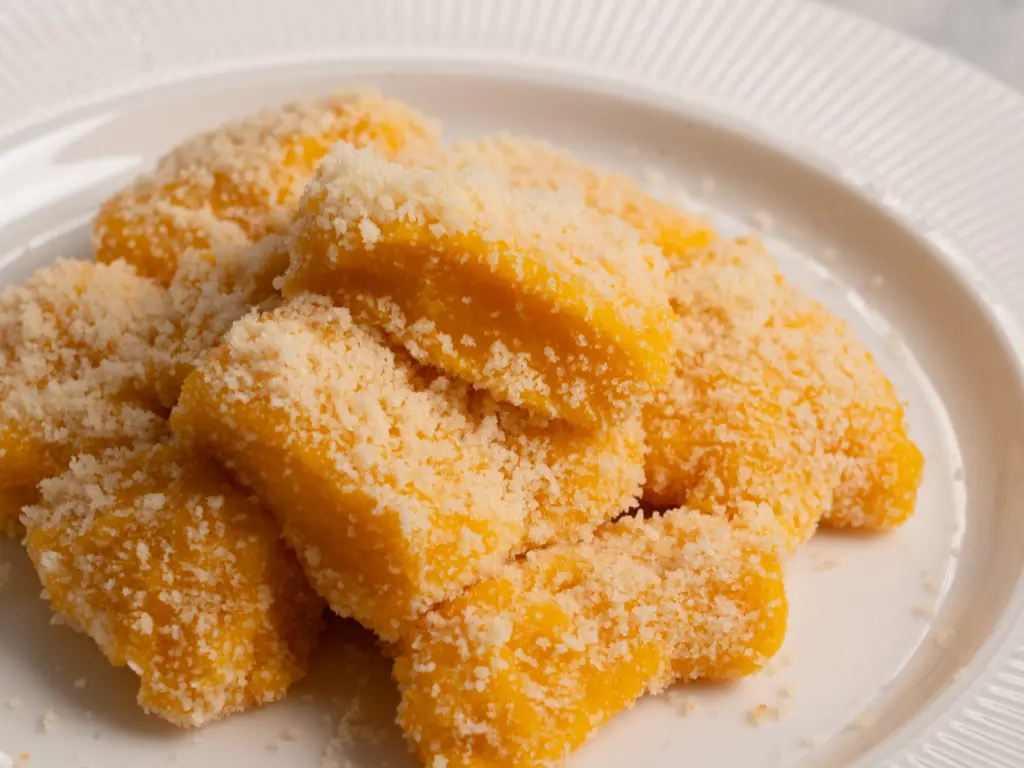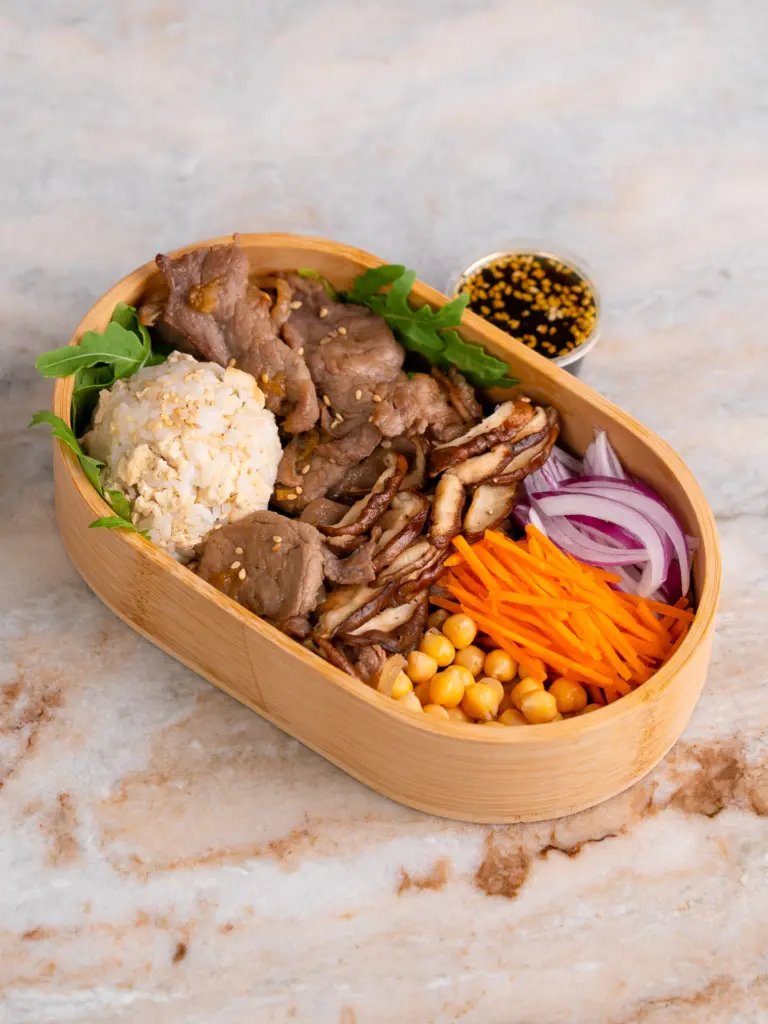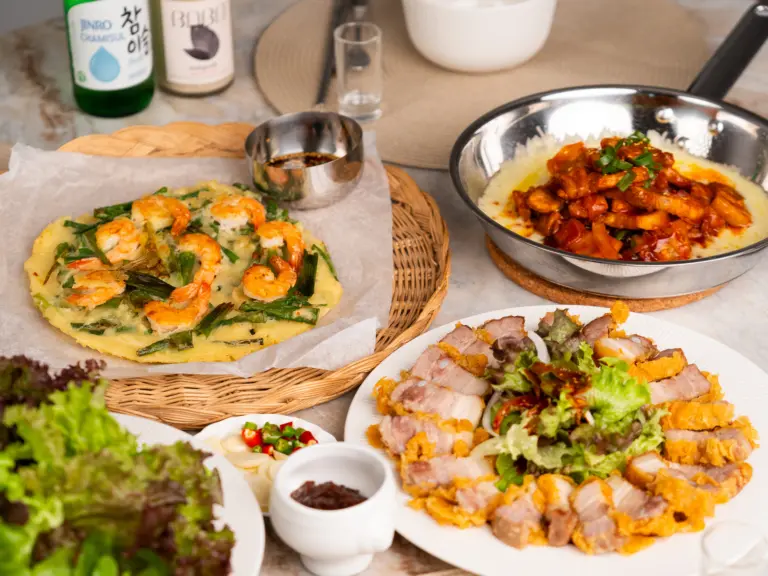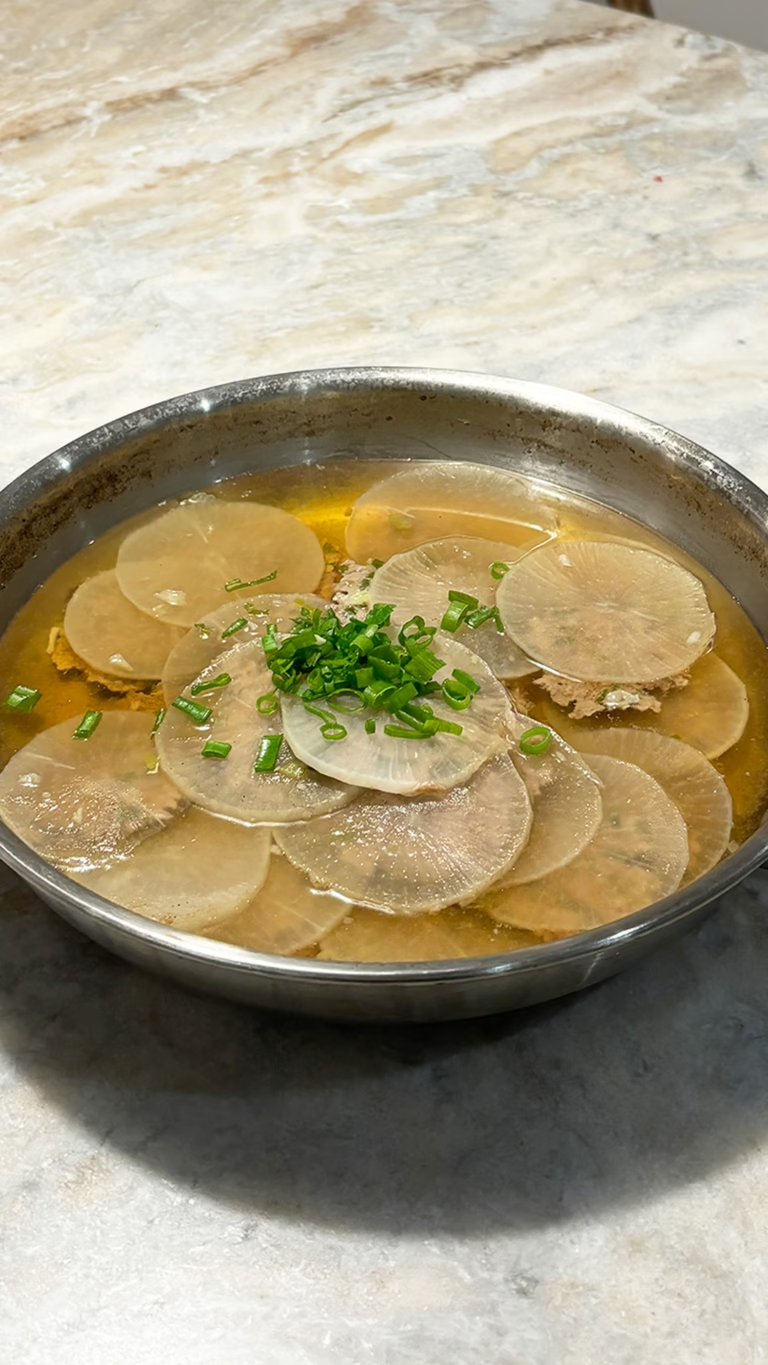Best 10 Korean Rice Cakes (Tteok) You Must Try
Korea has so many delicious types of Korean rice cakes! From spicy tteokbokki tteok to soft injeolmi, these 10 must-try tteok showcase the best flavors of Korean tteok.
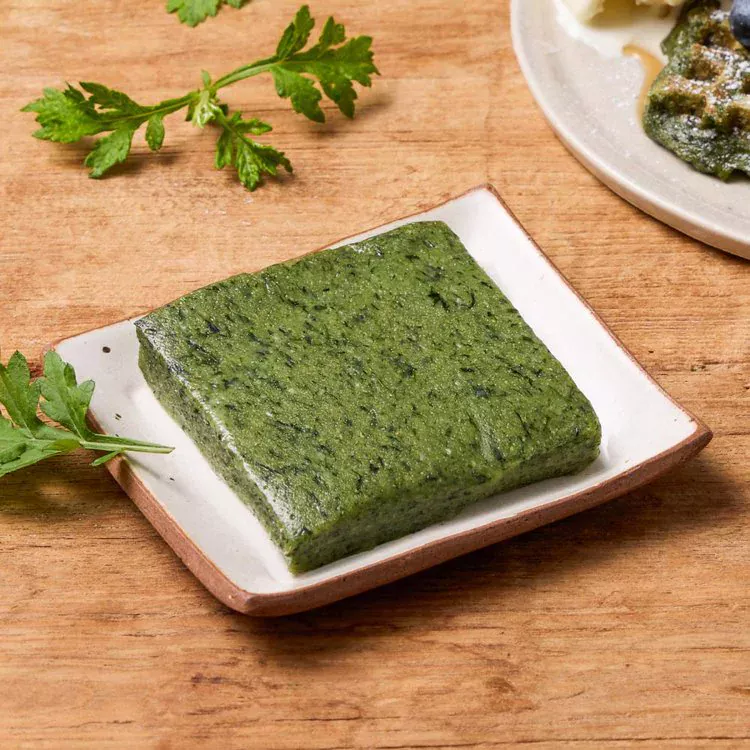
What is Korean Rice Cake?
Korean rice cake is called Tteok in Korea. It is made by steaming or boiling grain flours such as glutinous rice or non-glutinous rice. Ingredients like beans, red beans, or mugwort are often added to enhance flavor and nutrition, and different varieties of tteok are made. Korean tteok used to be a special food served during holidays or celebrations, eaten to pray for blessings from ancestors or for the health and harmony of the family. There was also a superstition that eating red beans would ward off evil spirits and misfortune.
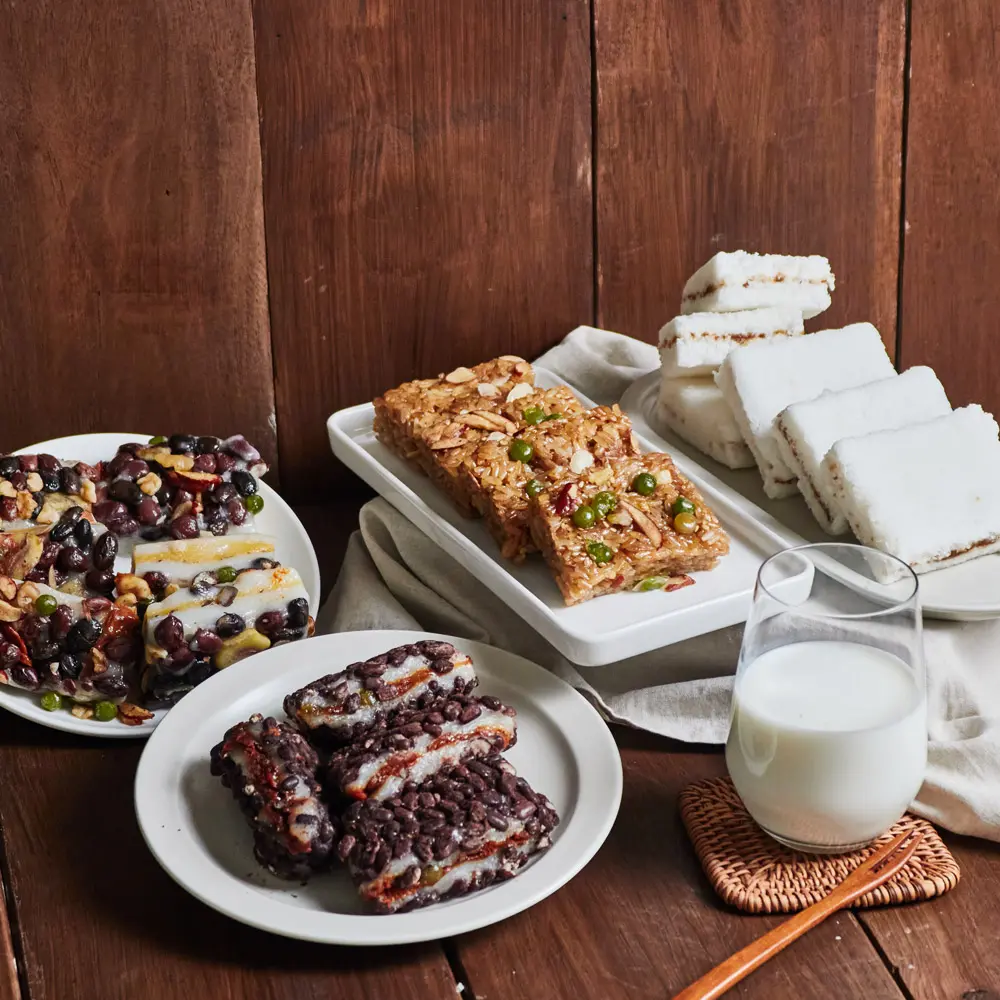
There are different methods of making Korean rice cake (tteok). Some are Sirutteok, which are steamed; Injeolmi, which are pounded; and Gyeongdan, which are boiled. There are also regional specialty tteok. For example, in Jeju Island, Omegi-tteok is famous, made with foxtail millet, mugwort, and red beans.
Korean Tteok for Cooking
Did you know that the rice cakes in tteokbokki and tteokguk are actually the same type called Garaetteok? If you make Garaetteok thin, it becomes tteokbokki rice cake, and if you make it thick and slice it thinly, it becomes tteokguk tteok. While it is often used in cooking, thick Garaetteok grilled over a fire and dipped in jocheong (rice syrup) or honey is also incredibly delicious.
Best Rose Tteokbokki in 15 Minutes – One Pan Recipe
Easy Tteokguk Recipe & Video (Korean Rice Cake Soup)
Holiday Korean Rice Cake
Tteok is one of the traditional foods for Korean holidays. For example, on Seollal (Lunar New Year), people eat Tteokguk, which uses long Garaetteok to symbolize living a long and healthy life. During Chuseok (Korean Harvest Festival), people eat Songpyeon. This tteok represents gratitude for the autumn harvest and wishes for abundance. Songpyeon is filled with beans, sweet red bean paste, or sweet sesame sugar. Kids often try to avoid Kong Songpyeon (filled with beans), but since you can’t see what’s inside, picky eating isn’t allowed haha
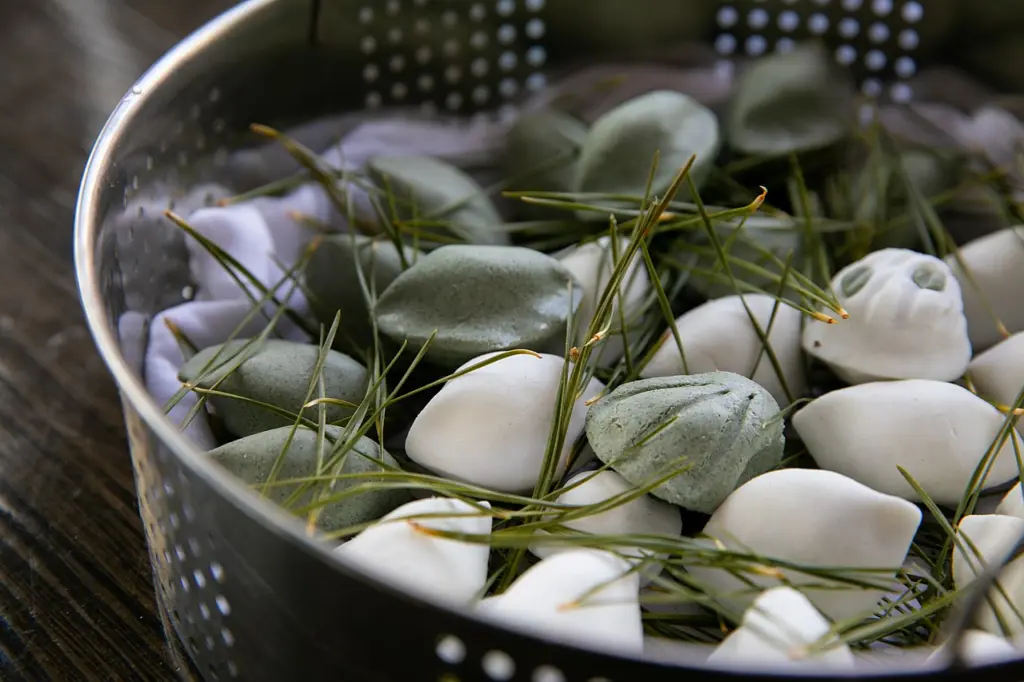
Korean Rice Cakes for Snack
Many tteok eaten as snacks are sweet varieties. For example, there is Kkul Tteok. If you love tteok, you probably already know Kkul Tteok well. These are small, round rice cakes in pink, white, and green, filled with sweet honey, sugar, or sesame, and they are one of the tteok most loved by Koreans.
Best 10 Korean Rice Cakes (Tteok)
There are so many types of Korean tteok, but I’ve carefully selected the 10 most delicious ones to recommend. If you’re unsure which Korean rice cake to try, choosing from this list is a guaranteed success.
Baekseolgi 백설기
Baekseolgi is a Korean rice cake made by mixing non-glutinous rice flour with sugar or honey and a pinch of salt, then steaming it in a siru (steamer). Its white color symbolizes purity, which is why it’s traditionally eaten on a baby’s 100th day or first birthday, wishing for the child’s health and pure heart. Unlike chewy tteok, Baekseolgi is soft and fluffy. The nutty flavor of the rice combined with its subtle sweetness makes it one of the most basic and delicious Korean tteok.
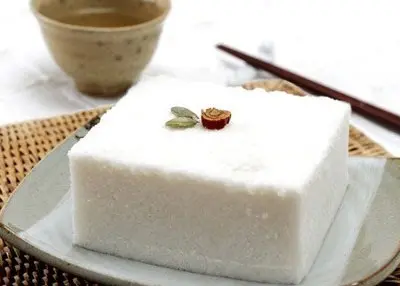
My grandmother used to run a Korean rice cake shop, and Baekseolgi was the tteok she made best. Every holiday, visiting my grandmother meant enjoying her lovingly made Baekseolgi, a taste I will never forget. I can’t eat it anymore, but the memory is truly warm and comforting.
Injeolmi 인절미
Injeolmi is a Korean rice cake made by mixing glutinous rice flour with water, sugar, and salt, then steaming it. The key step is pounding the steamed tteok in a mortar or with a mallet to create an extremely chewy and soft texture. Finally, it’s coated with sweet and nutty roasted soybean powder to finish the Injeolmi. This Korean rice cake is also a staple on holiday and festive tables, symbolizing wishes for good fortune. If you ask many Koreans which tteok they like most, Injeolmi is a Korean tteok universally loved without exception.

Ssuk Tteok 쑥떡
Ssuk Tteok is a Korean tteok where mugwort (ssuk) is the main ingredient. The mugwort is mixed with rice flour and steamed, giving the tteok a strong, fragrant aroma. There are several variations: coated with soybean powder as Ssuk Injeolmi, made thinly as Ssuk Jeolpyeon, or filled with sweet red bean paste. Historically, during Korea’s poor past, ssuk was used in spring to stretch grains and make tteok last longer. Today, it is much more expensive than regular Korean rice cake and is sought after for its health benefits.
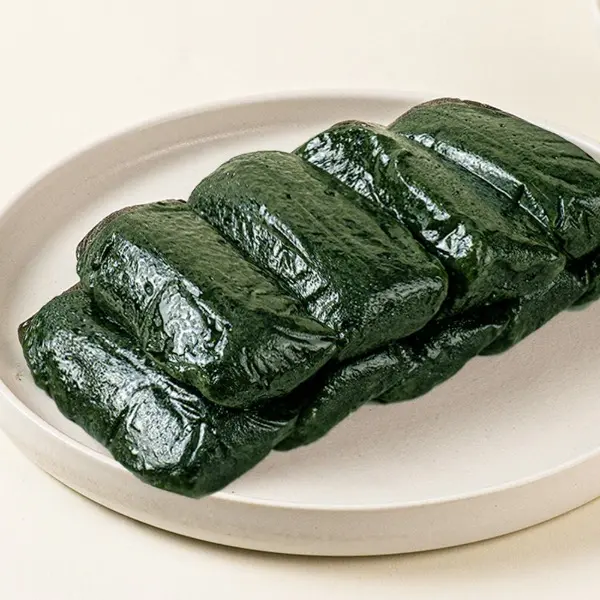
Kkul Tteok 꿀떡
The Korean tteok featured in the viral TikTok “Kkul Tteok Cereal” is this Kkul Tteok. It’s made by mixing glutinous rice flour and non-glutinous rice flour. The Korean tteok is shaped into small round balls much smaller than a golf ball, and comes in white, pink, and deep mugwort green colors. Inside, there’s sweet filling like honey, sugar, or sesame. Its shape is similar to Songpyeon, so it’s sometimes called Kkul Songpyeon. This Korean rice cake is loved by many children and is also highly recommended for foreigners to try.
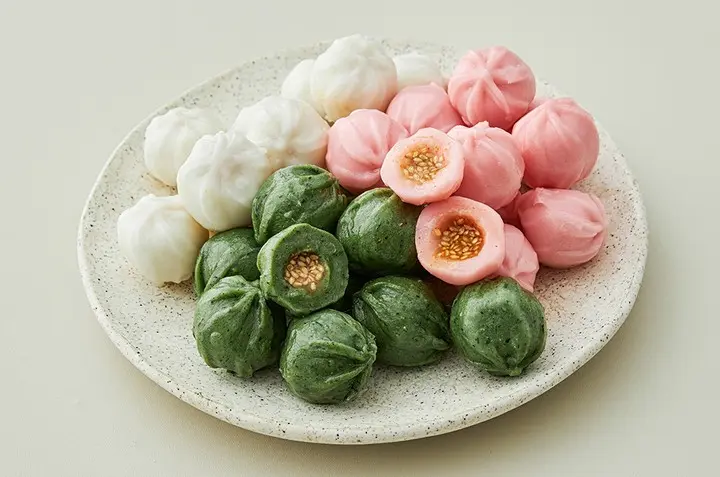
Siru Tteok 시루떡
Siru Tteok is made by steaming rice flour in a siru (a traditional Korean steamer) and is considered the most basic form of one of Korea’s oldest tteok. The most representative variety is Pat Siru Tteok, topped with red bean paste. Instead of sweet red bean paste, some versions use slightly salty red beans, creating a rich, nutty flavor.
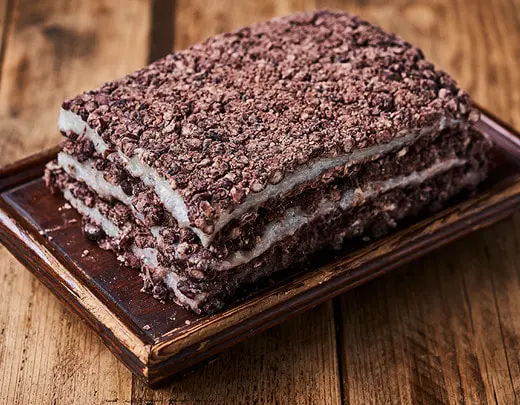
The red color of the beans was traditionally believed to ward off evil spirits, so people ate it on New Year’s Day to drive away bad luck and pray for peace in the home. It was also customary to make Siru Tteok when moving houses and share it with neighbors to maintain good relations and keep evil spirits away. When I was very young, it was common to share Korean tteok with neighbors after moving, and I feel nostalgic that this tradition has mostly disappeared.
Songpyeon 송편
Songpyeon is made from kneaded glutinous rice flour and is usually shaped into half-moons. It is filled with sesame seeds, red beans, or beans, and steamed on pine needles. The fragrant pine scent is the key difference between Songpyeon and Kkul Tteok (Honey Rice Cake). This Korean rice cake is traditionally eaten during Chuseok, Korea’s major harvest festival, to give thanks for the year’s harvest.
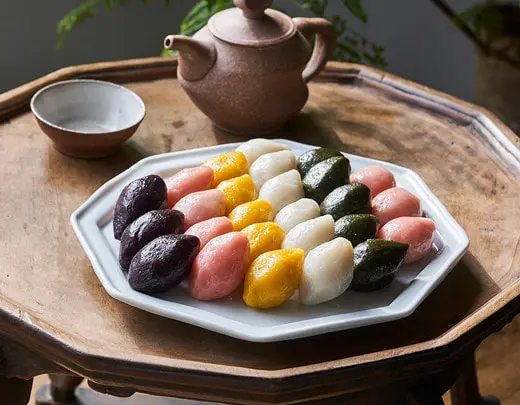
Songpyeon Recipe
This is a Songpyeon recipe traditionally enjoyed during Chuseok. My grandmother used to run a rice cake shop, and this recipe is adapted from hers so it can be easily made even outside Korea. The filling is the most popular one — sesame filling. It’s nutty, sweet, and absolutely delicious.
Chuseok Tteok: Easy Songpyeon Korean Rice Cake
Omegi Tteok 오메기떡
Omegi Tteok is a traditional Korean rice cake from Jeju Island. In Jeju, glutinous millet called Omegi is used as the main ingredient to make mugwort tteok, which is then filled with sweet red bean paste and coated with whole red beans on the outside. The combination of sweet filling and the nutty exterior creates a delicious Korean tteok. When I lived in Korea, I often ordered it via direct delivery from Jeju, and it’s one of my favorite tteok. Since moving to Europe, I can no longer find it, which I really miss.

Baram Tteok 바람떡
Baram Tteok is made by steaming and pounding glutinous rice flour. It is filled with sweet red bean paste and shaped into a half-moon. When the rice cake is folded, air gets trapped inside, creating a puffed-up shape, which is why it’s called Baram Tteok (“wind rice cake”). There are plain white versions and mugwort (Ssuk) versions, made during spring when fresh mugwort is available.
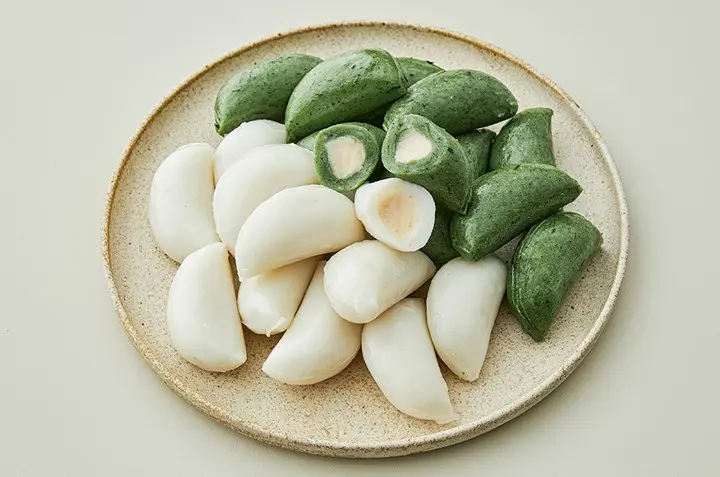
Hobak Tteok 호박떡
Hobak Tteok is made by mixing rice flour with kabocha or pumpkin and steaming it in a siru. Nowadays, the pumpkin is often mashed or made into sweet pumpkin paste to enhance flavor and sweetness. This tteok is commonly enjoyed in autumn and winter.
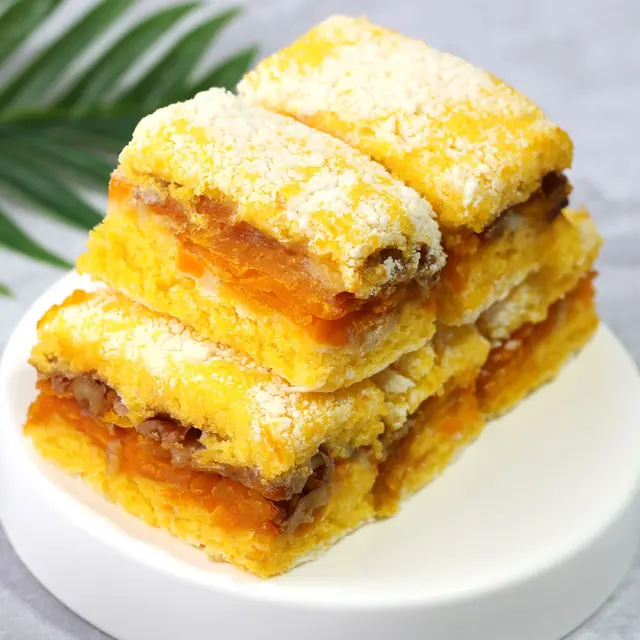
Pumpkin Rice Cake Recipe
This is a Korean rice cake, pumpkin injeolmi with castella enjoyed in the fall, called Hobak Injeolmi (Pumpkin Korean Rice Cake). Made with glutinous rice flour, it has a soft and chewy texture, and the topping of finely ground Castella cake makes it sweeter and smoother than regular injeolmi.
Castella Pumpkin Injeolmi Tteok: Easy Korean Rice Cake
It’s a trendy Korean rice cake loved by many for its delicate sweetness and soft flavor. With this easy tteok recipe, you can now enjoy a traditional Korean dessert right at home.
Gijeong Tteok (Sul Tteok or Sulppang) 기정떡
Gijeong Tteok, also called Sul Tteok 술떡 or Sulppang 술빵, is not sold in bakeries but only in tteok shops. It is made by fermenting rice flour with makgeolli and then steaming it. The texture is a cross between tteok and bread—soft, fluffy, and light. It is decorated with pine nuts, dried jujube, and black sesame on top of the white tteok.

FAQs about Korean Rice Cakes, Tteok
What are Korean rice cakes made of?
Rice cakes (tteok) are made from either glutinous or non-glutinous rice flour. Some varieties also contain additional ingredients such as beans, red beans, mugwort, pumpkin or other natural ingredients to enhance flavour and nutrition. Depending on the recipe, tteok can be steamed, boiled or pounded to achieve different textures.
Are Korean rice cakes healthy?
Korean rice cakes contain many natural ingredients and are considered healthy in terms of their composition. However, they can raise blood sugar very quickly, so it’s better to eat them in moderation.
What is the difference between tteokbokki and rice cakes?
Tteokbokki is a famous Korean street food made by adding a sweet and spicy gochujang sauce to long, thin, cylindrical garaetteok rice cakes. While rice cakes themselves can be eaten in many dishes, tteokbokki specifically refers to this popular prepared dish.
What is the taste of tteokbokki?
Tteokbokki has a sweet, spicy, and savory flavor, and the chewy rice cakes absorb the sauce, giving a satisfying texture. However, the chewiness can be polarizing for foreigners, with some loving it and others not.
Why are Korean rice cakes chewy?
The chewy texture comes from glutinous rice flour. When steamed or pounded, the rice starch gelatinizes and stretches, creating that signature chewiness in tteok. Some types, like injeolmi, are pounded repeatedly to maximize the soft and chewy texture.
Are rice cakes healthy for weight loss?
Rice cakes are not recommended for weight loss. Even non-sweet varieties are high in carbohydrates and tteok can raise blood sugar very quickly.
Can I eat tteokbokki while on diet?
I do not recommend eating tteokbokki while dieting. The sauce contains a lot of sugar, the gochujang is high in sodium, and the rice cakes are rich in carbohydrates. This combination causes a very rapid spike in blood sugar, making it unsuitable for weight loss.
Best Korean rice cakes to try
Some of the best Korean tteok to try include:
Baekseolgi (steamed white tteok)
Injeolmi (chewy rice cake coated with soybean powder)
Kkul Tteok (honey-filled tteok)
Songpyeon (holiday half-moon tteok)
Hobak Tteok (pumpkin tteok)
These tteok varieties showcase the flavor, texture, and tradition of Korean rice cakes.
Traditional Korean rice cakes for holidays
During holidays like Seollal (Lunar New Year) and Chuseok (Harvest Festival), Korean rice cakes are an essential part of the celebration. Tteokguk (sliced rice cake soup) symbolizes long life, while Songpyeon (half-moon shaped rice cakes filled with beans or sesame) expresses gratitude for the harvest. Holiday tteok is both meaningful and delicious.
How to make injeolmi
Injeolmi is made by steaming glutinous rice flour, then pounding it until chewy. The tteok is cut into bite-sized pieces and coated with roasted soybean powder, giving a nutty and sweet flavor. It’s a classic Korean rice cake loved for its chewy texture and subtle taste.
Korean rice cake types
There are many types of Korean rice cakes, including:
Garaetteok (long cylinders used in tteokbokki and tteokguk)
Baekseolgi (steamed white tteok)
Injeolmi (chewy rice cake with soybean powder)
Ssuk Tteok (mugwort tteok)
Kkul Tteok (sweet honey tteok)
Songpyeon (Chuseok half-moon cake)
Hobak Tteok (pumpkin tteok)
Omegi Tteok (Jeju Island specialty)
Each type has unique ingredients, texture, and cultural meaning.

